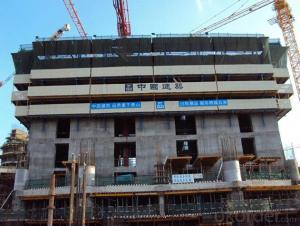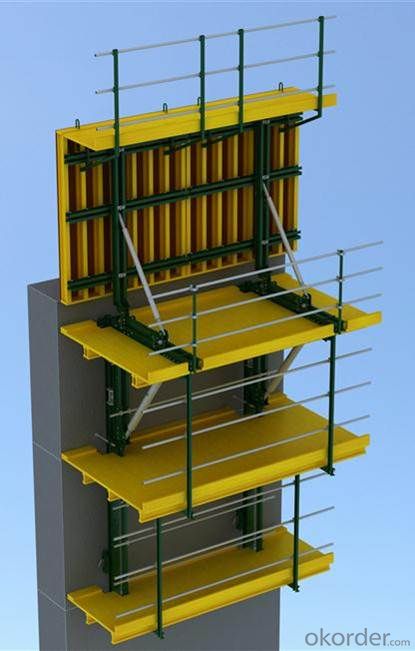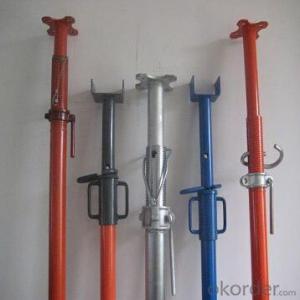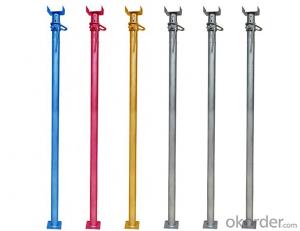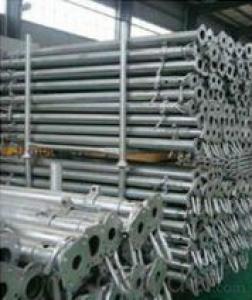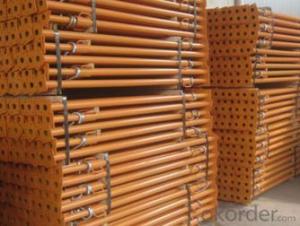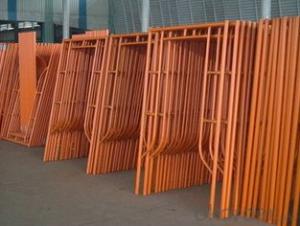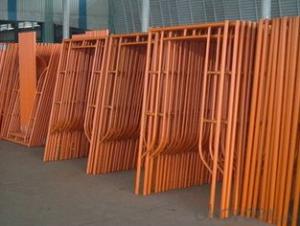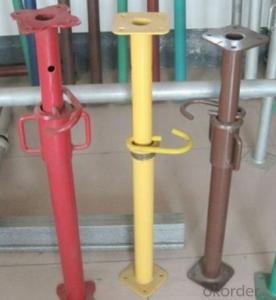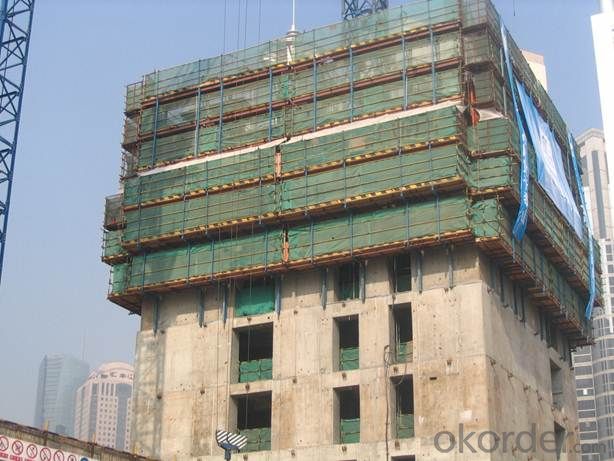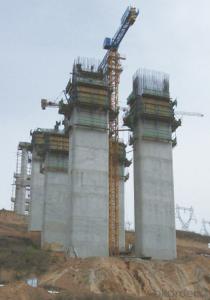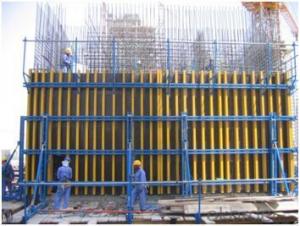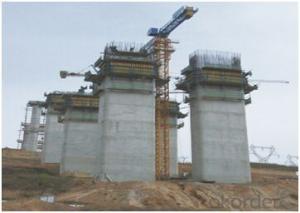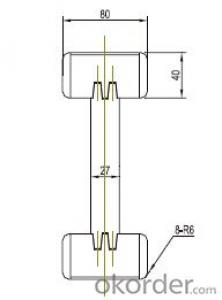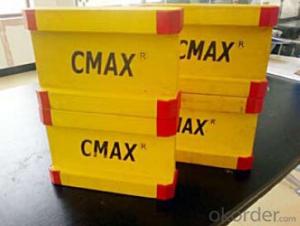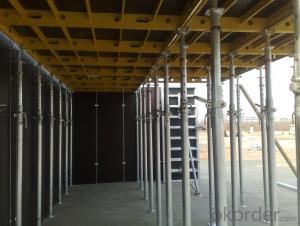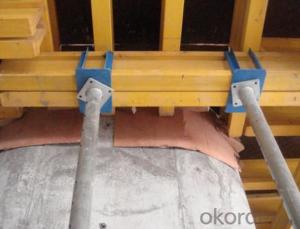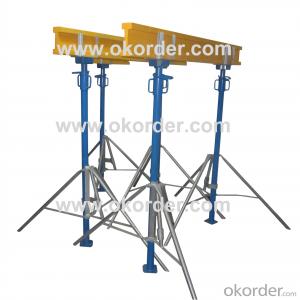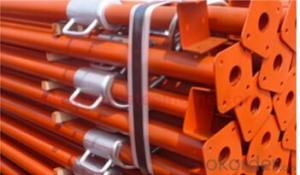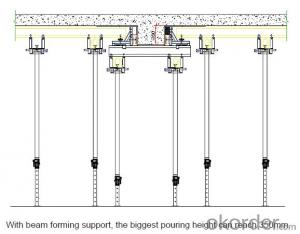Timber Beam Formwork-Climbing Formwork
- Loading Port:
- China Main Port
- Payment Terms:
- TT OR LC
- Min Order Qty:
- -
- Supply Capability:
- -
OKorder Service Pledge
Quality Product, Order Online Tracking, Timely Delivery
OKorder Financial Service
Credit Rating, Credit Services, Credit Purchasing
You Might Also Like
Thepower of the Autoclimbing Formworkis the hydraulic system, whichincludes theoil cylinder and two commutators etc. Thecommutators can control the climbing of climbingrail and the bracket. The steel rail
andthe bracket can inner-climbing, so thewhole system will climb upsteadily.
Cranesare not needed during the constructing. It is easy tooperate, highly efficient and safe. It is thebest choice for the construction of highbuildings and bridges.
Characteristics
Safety:
1.Thesystem can climbintegrallyor separately.
2.Theclimbing process is steady,synchronousand safe.
3.Excellentoperating platformhandrailand aislecanbe liftedtogetherwith the formwork.
4.Theclimbing speed is quick, which can shorten the construction period and reduce the construction cost.
- Q: Can steel props be used in temporary bridges?
- Yes, steel props can be used in temporary bridges. Steel props are commonly used in construction and can provide the necessary support and stability required for temporary bridge structures.
- Q: How do you transport steel props safely?
- To transport steel props safely, it is important to follow a few guidelines. Firstly, ensure that the props are securely fastened and stacked in a stable manner to prevent any movement during transportation. Use appropriate lifting equipment, such as cranes or forklifts, to load and unload the props carefully. It is also recommended to use protective coverings or padding to prevent any scratching or damage. Lastly, adhere to the weight limits and regulations specified by the transportation authorities to ensure a safe and legal transport of steel props.
- Q: Why are steel braces less concrete?
- It's a tough thing, and the other is tough
- Q: Are steel props suitable for supporting temporary recreational facilities?
- Yes, steel props are suitable for supporting temporary recreational facilities. Steel props, also known as adjustable props or acrow props, are commonly used in construction projects to provide temporary support to structures. They are designed to bear heavy loads and provide stability, making them suitable for supporting temporary recreational facilities such as tents, stages, or temporary structures used for events like concerts, exhibitions, or sports activities. Steel props are typically made of high-quality steel, which gives them strength and durability. They are adjustable in height, allowing for flexibility in supporting different types of structures with varying heights and sizes. The ability to adjust the height of the props ensures that the temporary recreational facilities are properly supported and levelled. Moreover, steel props have a wide base plate at the bottom, which helps distribute the weight evenly and prevent sinking into the ground. This feature is particularly important when setting up temporary recreational facilities on soft or uneven surfaces. Furthermore, steel props can be easily installed and removed, making them convenient for temporary applications. They can be quickly assembled and disassembled, allowing for efficient setup and dismantling of recreational facilities. This is particularly beneficial for events or activities that require frequent reconfiguration or relocation of the facilities. In conclusion, steel props are a suitable choice for supporting temporary recreational facilities due to their strength, adjustability, stability, and ease of installation. They provide the necessary support and stability required for these structures, ensuring a safe and enjoyable experience for users.
- Q: How much is the glass floor cost. That's the kind of steel frame
- Design parameters related to the thickness of the glass, whether or not coated, hollow specifications, spotlights requirements, size, color, glass brand
- Q: How do you ensure the stability of a steel prop?
- To ensure the stability of a steel prop, several measures can be taken. Firstly, it is important to choose a prop that is of appropriate size and strength for the intended load-bearing capacity. The prop should be securely positioned on a stable and level surface, such as a concrete base. Additionally, proper bracing and support should be provided to prevent any lateral movement or swaying. Regular inspections and maintenance should be conducted to identify and address any signs of wear or damage. Finally, adhering to relevant safety guidelines and regulations is crucial in ensuring the overall stability and reliability of the steel prop.
- Q: Are steel props suitable for supporting temporary warehouses or storage facilities?
- Yes, steel props are suitable for supporting temporary warehouses or storage facilities. Steel props are strong, durable, and adjustable, making them ideal for providing stable support to large structures like warehouses or storage facilities. They can bear heavy loads and can be easily installed and removed, making them a reliable choice for temporary structures.
- Q: Can steel props be used in temporary support of stairs?
- Certainly, steel props have the capability to be utilized in the temporary support of stairs. These adjustable and telescopic columns, known as steel props, are commonly employed in construction or renovation endeavors to offer temporary support. Their primary purpose is to endure substantial loads and promote stability, thereby rendering them apt for providing support to stairs during temporary installations or repairs. With the ability to conveniently adjust to the desired height and firmly secure in position, steel props guarantee a secure and steady support system for the stairs.
- Q: Are steel props adjustable with computer-controlled automation systems?
- Yes, steel props can be adjustable with computer-controlled automation systems. These systems can accurately and precisely control the length and height of the steel props, allowing for easy and efficient adjustments according to specific requirements.
- Q: Can steel props be used in telecommunications tower construction?
- Yes, steel props can be used in telecommunications tower construction. Steel props, also known as temporary support systems or scaffolding, are commonly used in construction projects to provide structural support and stability. They can be used to support various components of a telecommunications tower, such as the mast, antennas, and equipment platforms, during the construction process. Steel props are made of high-strength steel and are adjustable in height, allowing for flexibility in tower construction. They are designed to withstand heavy loads and provide stability to the structure. Additionally, steel props are easy to install, dismantle, and reposition, making them a suitable choice for the dynamic nature of telecommunications tower construction.
Send your message to us
Timber Beam Formwork-Climbing Formwork
- Loading Port:
- China Main Port
- Payment Terms:
- TT OR LC
- Min Order Qty:
- -
- Supply Capability:
- -
OKorder Service Pledge
Quality Product, Order Online Tracking, Timely Delivery
OKorder Financial Service
Credit Rating, Credit Services, Credit Purchasing
Similar products
Hot products
Hot Searches
Related keywords
